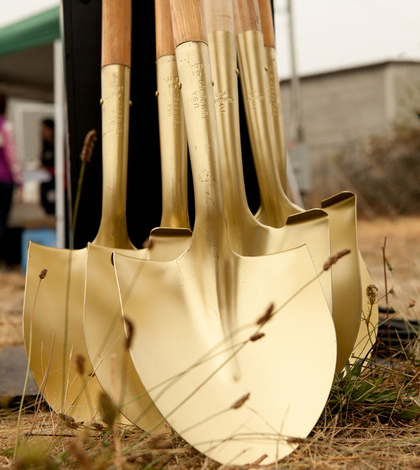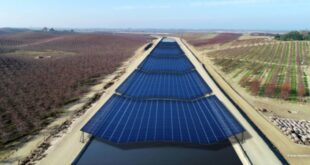Federal and state representatives gathered together earlier this week to celebrate the groundbreaking of the Fremont Weir Adult Fish Passage Modification Project within the Yolo Bypass. The project is one of six California EcoRestore breaking ground this year as part of a larger vision to restore Delta habitat for native fish and wildlife. The California Department of Water Resources (DWR), U.S. Bureau of Reclamation, and California Natural Resources Agency gathered together for the groundbreaking festivities and their joint project.
The California EcoRestore Initiative, launched by California’s Governor Jerry Brown in 2015 is a multi-agency effort to accelerate the restoration of at least 30,000 acres of critical Delta habitat. The Fremont Weir Project will restore an important migration corridor for native fish species and complies with the requirements of the 2009 National Marine Fisheries Service’s (NMFS) Biological Opinion on the Long-Term Operations of the Central Valley Project and State Water Project.
Whereas the 2009 NMFS Biological Opinion recognized the importance of Yolo Bypass floodplain for its fish rearing habitat and fish passage, the nearly 100-year-old Fremont Weir was inadequate. Restoration of the weir required the DWR and the Bureau of Reclamation to jointly complete several projects to ensure the health, safety and successful spawning of Chinook salmon, steelhead and green sturgeon.
California Natural Resources Secretary John Laird, speaking at the groundbreaking ceremony for the Fremont Weir Project, spoke on the genesis of the project saying, “Today we celebrate both the indomitable spirit of California’s native fish, and the indomitable spirit of those working to protect them. Through large-scale conservation actions, we can begin reversing trends of species declines, and create the healthy environments we all want future generations to experience. This project turns what is primarily a flood control facility into one that serves multiple benefits. May today be but the first celebration in a year full of reasons to celebrate.”
As part of the state’s flood control system, the Yolo Bypass receives flood waters from major rivers in the state’s Central Valley including the American, Sacramento and Feather rivers. When flooded, the bypass becomes one of the largest seasonal floodplains in the Delta, and a migration corridor for dozens of native fish species. The Fremont Weir’s current, aged fish ladder provides inadequate fish passage and poses an obstacle for anadromous fish returning to their spawning grounds causing migratory delays and even death.
The Fremont Weir modification project modernizes the structure and widens the channel in order to provide an easier passage for fish swimming to their upstream habitat. The project is part of a larger vision to restore Delta habitat for native fish and wildlife.
“This project highlights the complexity and competing needs of our system. But moreover, it showcases a solution,” said DWR Director Karla Nemeth. “Our work as water managers in the 21st century is to steward California’s diversity and beauty, while also ensuring public safety and water supply reliability. We can no longer choose one over the other. It’s not a trade-off analysis. We can and must ensure that all of our complex projects achieve multiple benefits, guided by a vision of long-term sustainability and public safety amid a changing climate.”
The EcoRestore Initiative is reflective of a deep commitment from a diverse group of stakeholders to restore the Sacramento and San Joaquin watersheds and to protect water supplies, ensure public safety, steward our natural resources and improve salmon runs.
“These types of multiple benefit projects are the future of California water management and demonstrate that collaboration among diverse stakeholders can resolve even the thorniest water challenges,” said American Rivers Director of Conservation for California Flood Management John Cain.
“The Fremont Weir is a prime example of what we can do when state and federal partners work together for water supply reliability in California. The State Water Project and the Central Valley Project are inextricably linked, and we have to work together, as we have done with this project, if we are to meet the needs of Californians,” Reclamation’s Mid-Pacific Regional Director David Murillo “We are pleased to provide the funding for the Fremont Weir construction effort as part of our work under the 2009 NMFS Biological Opinion.”
 California Water News Daily Your Source For Water News in California
California Water News Daily Your Source For Water News in California


